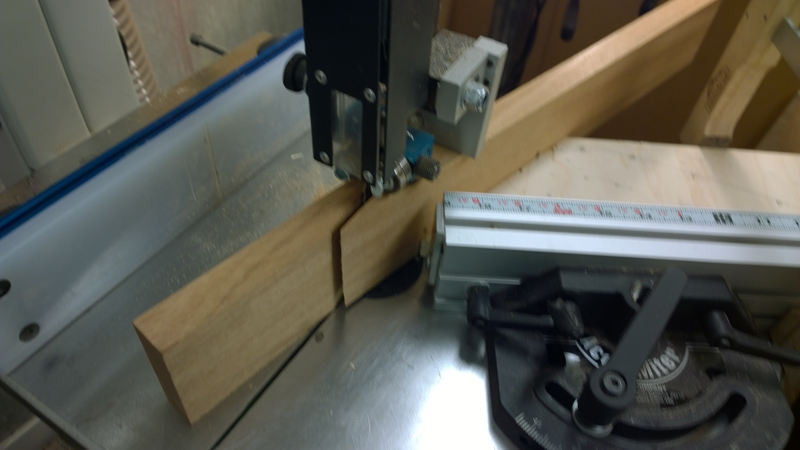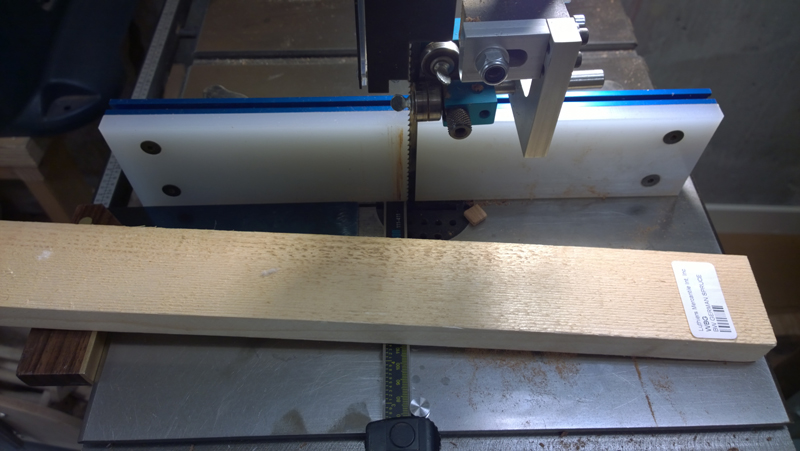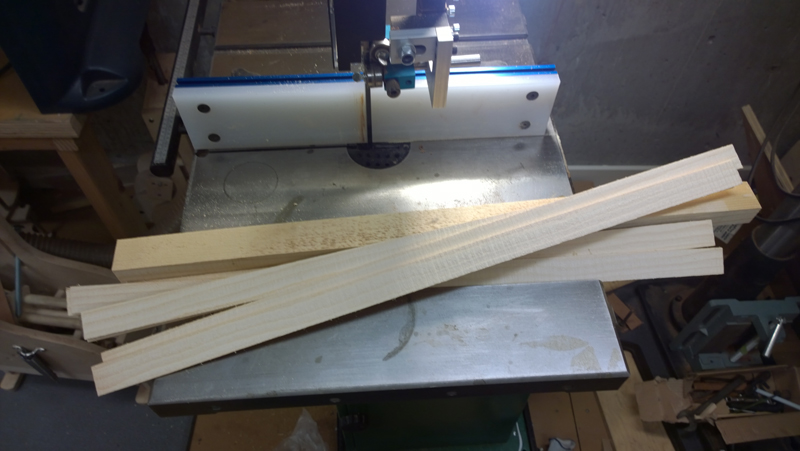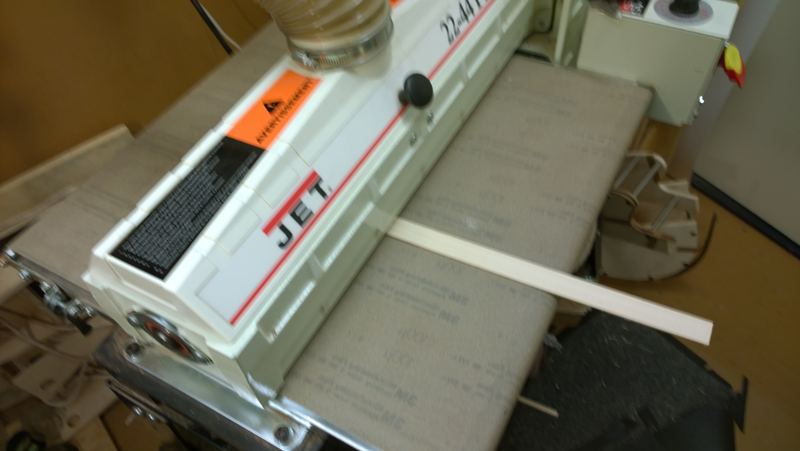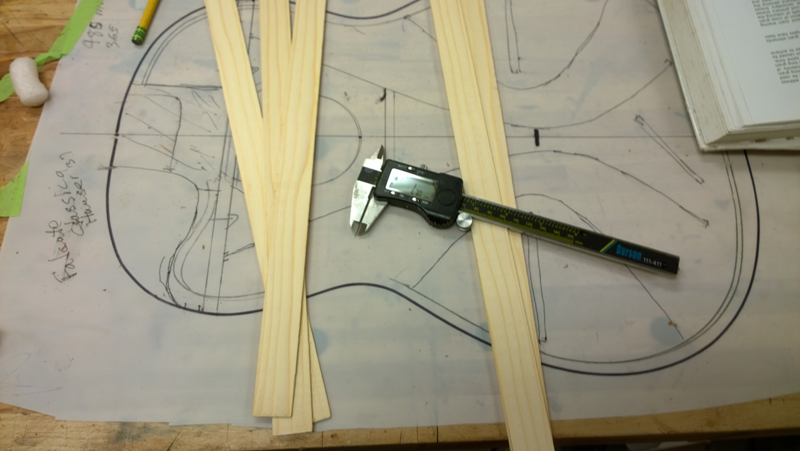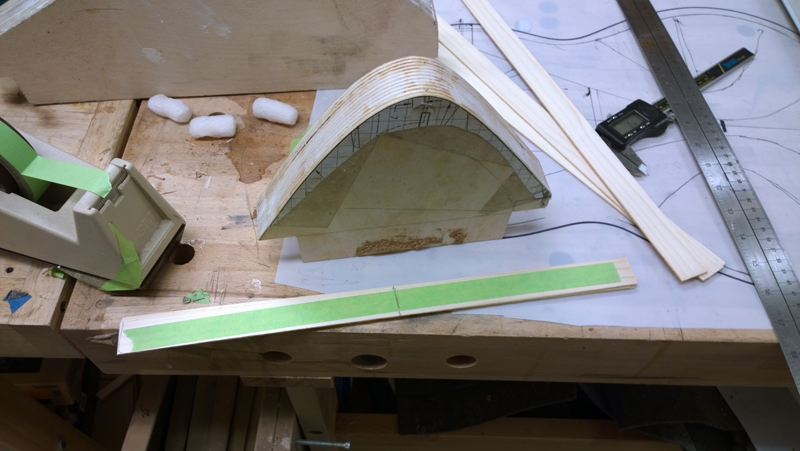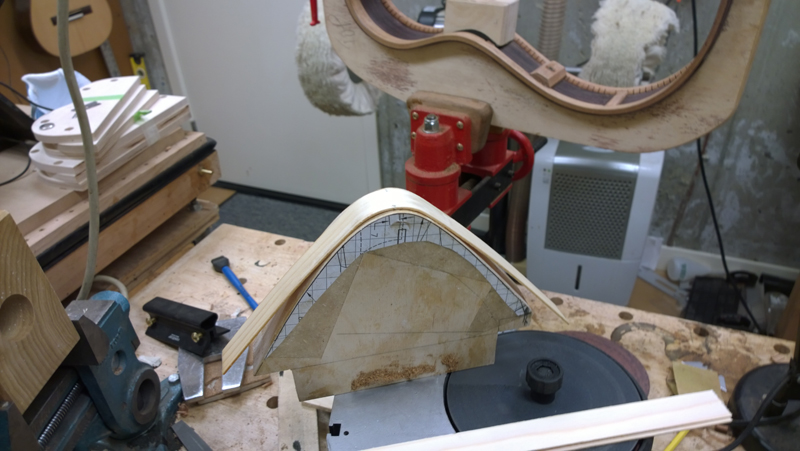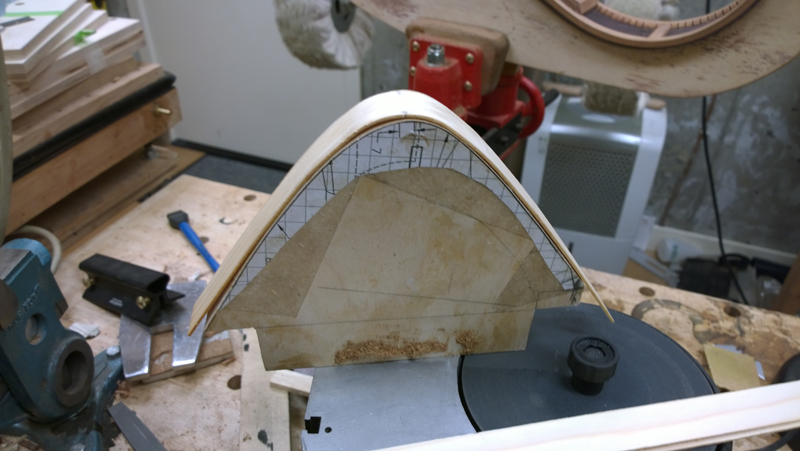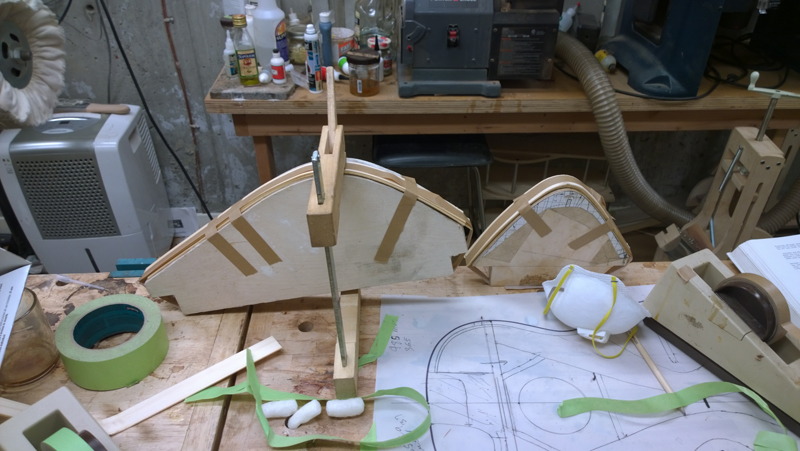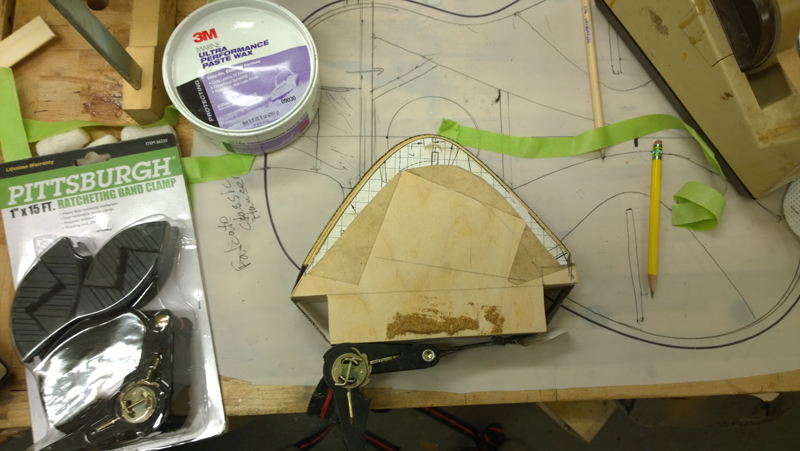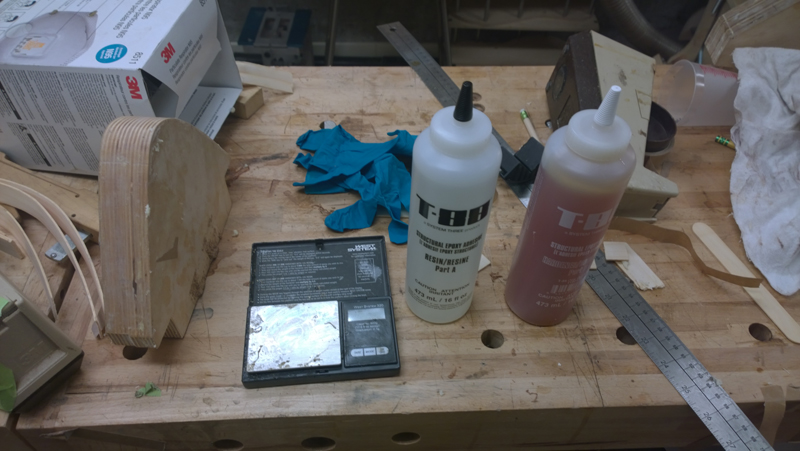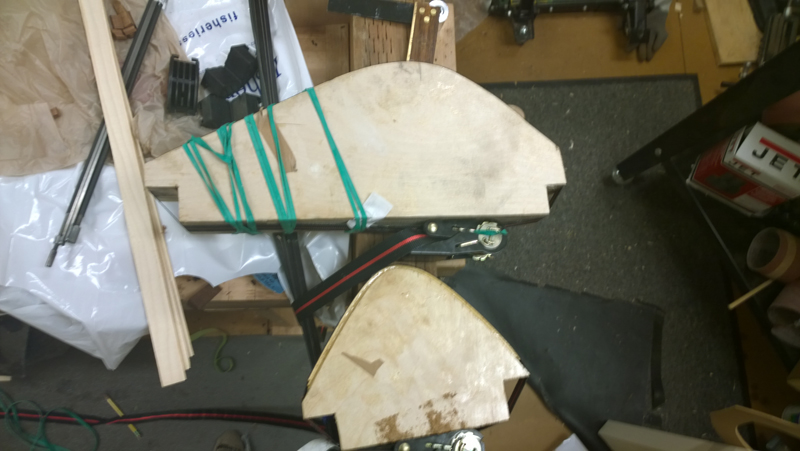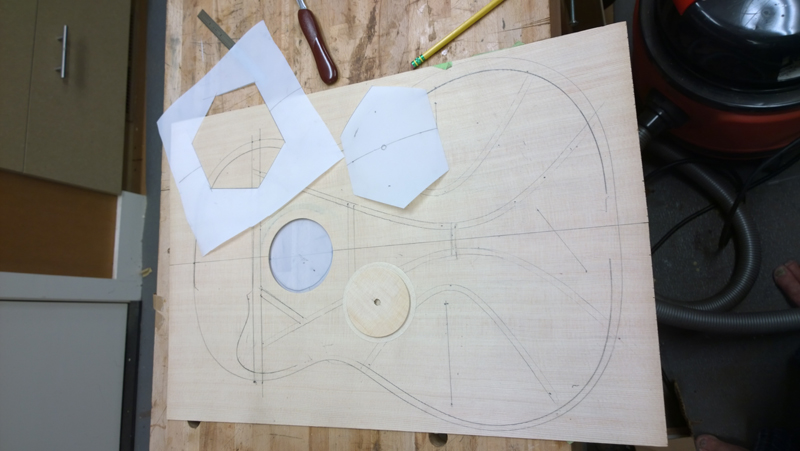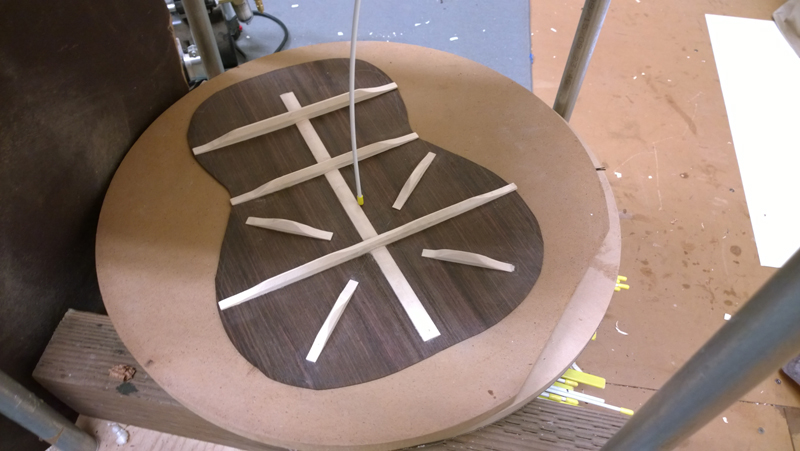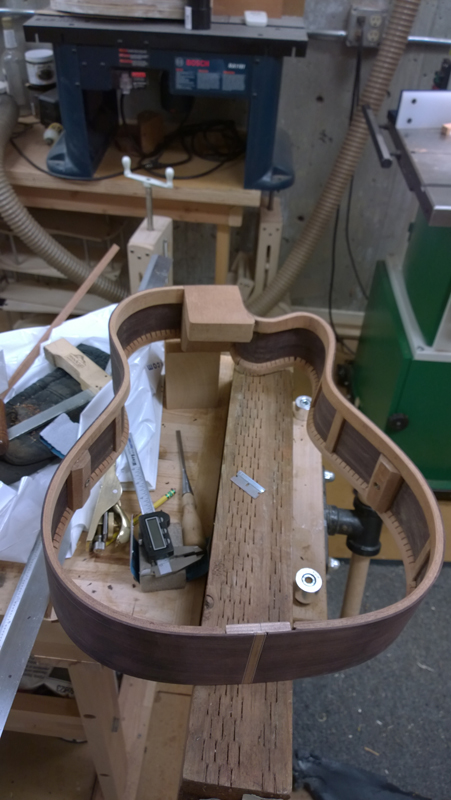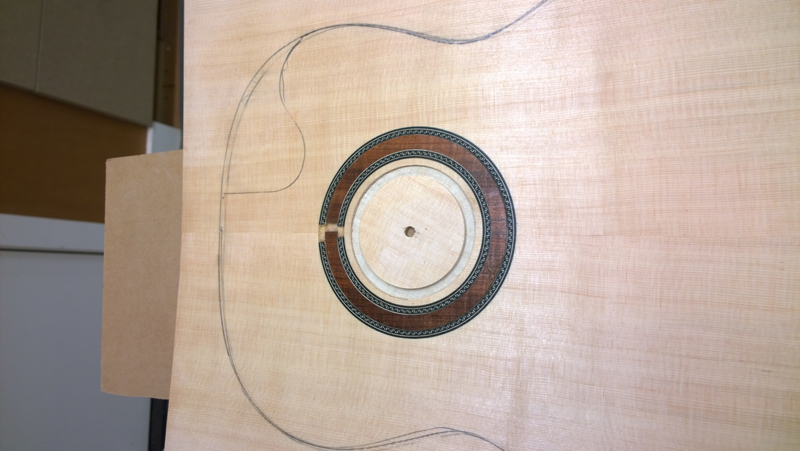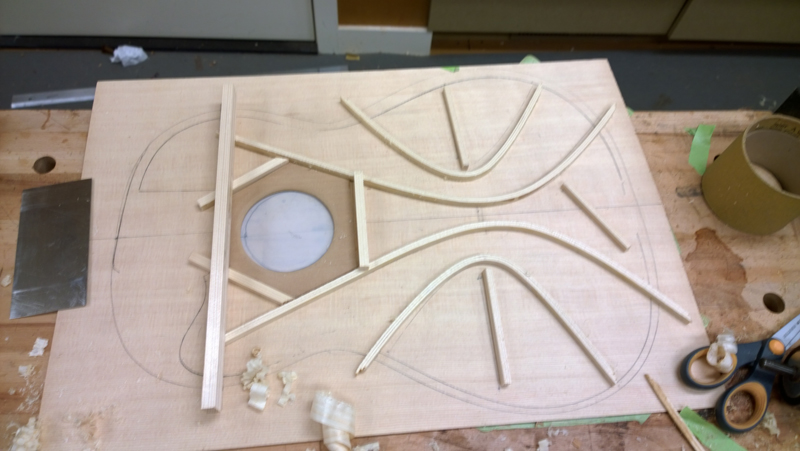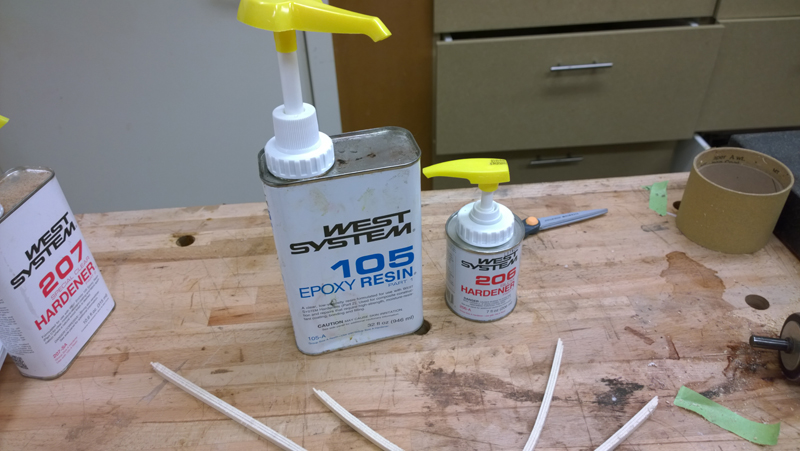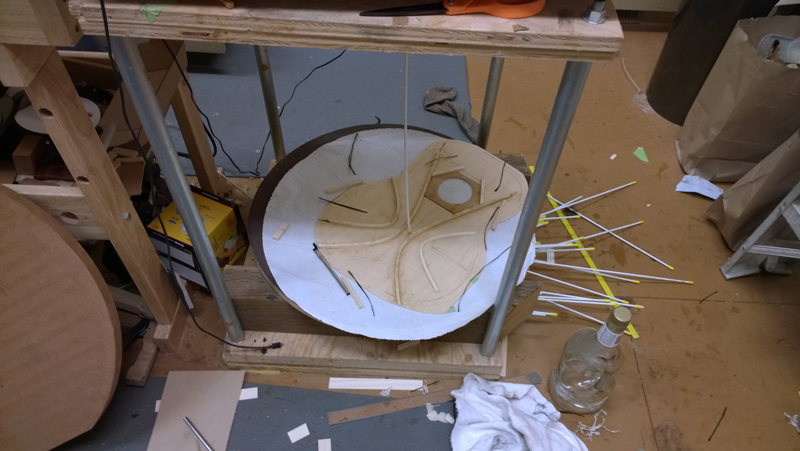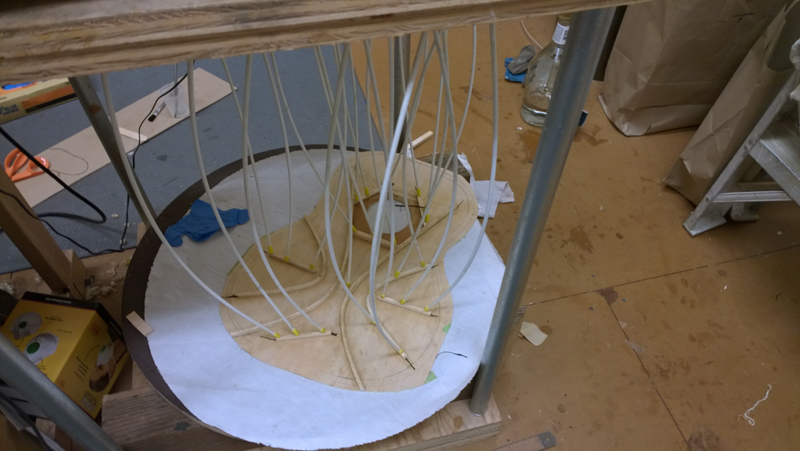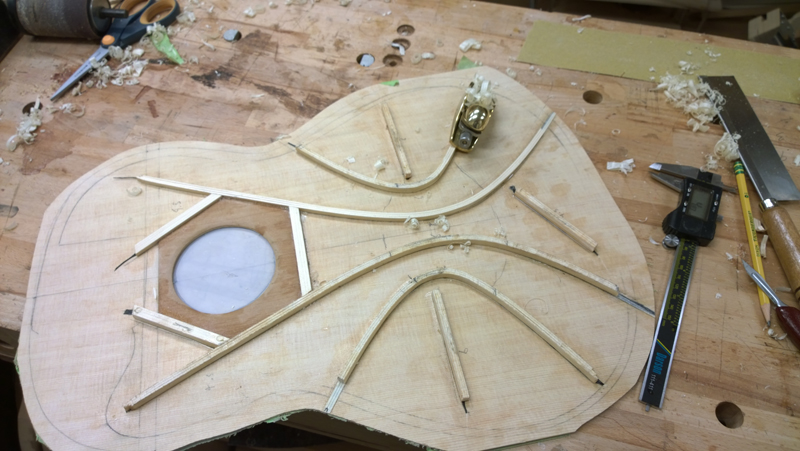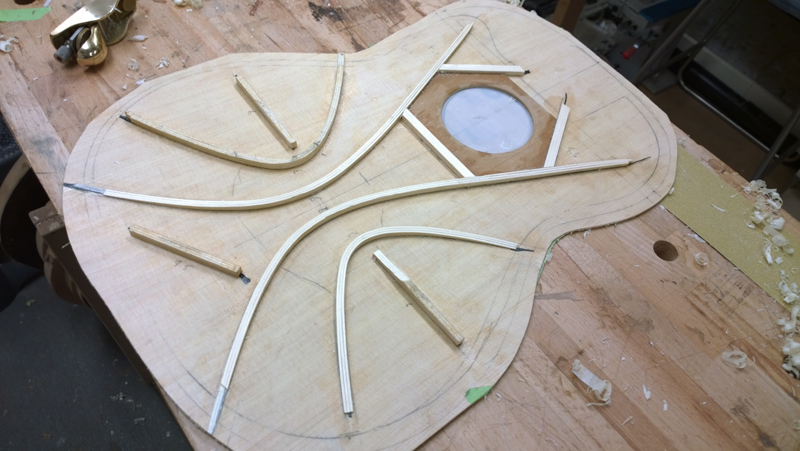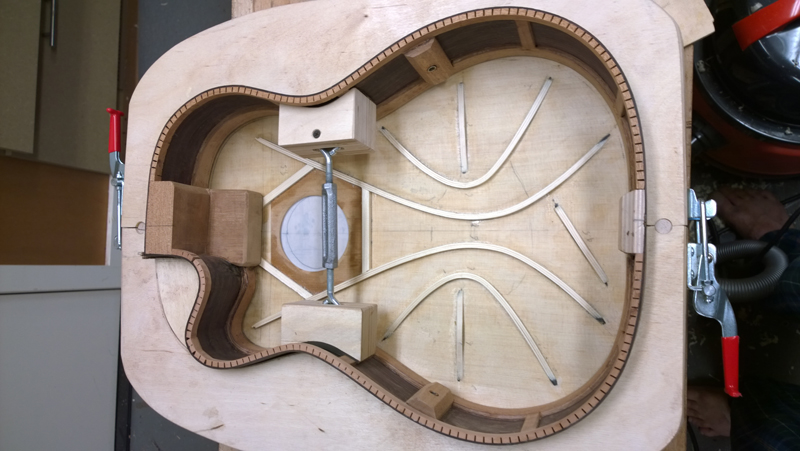Page 3 of 8
Re: Falcate Braced Classical Guitar
Posted: Wed Feb 11, 2015 7:07 pm
by John Parchem
John, That is what I hope is true. The solid linings are to create a bigger impedance mismatch between the top and the sides, reflecting vibrations back to the top and not draining energy away. I only did the top as the top gives the biggest bang for the effort also the back is profiled with a 10' radius. It would have been hard to get those linings to follow the top of the rims.
Re: Falcate Braced Classical Guitar
Posted: Thu Feb 12, 2015 4:17 pm
by John Parchem
Re: Falcate Braced Classical Guitar
Posted: Fri Feb 13, 2015 1:51 am
by John Parchem
Re: Falcate Braced Classical Guitar
Posted: Fri Feb 13, 2015 11:41 am
by ken cierp
Regular clear plastic packaging tape is the best release material I have ever used -- nothing sticks to it, not even epoxy, Bondo or CA -- try it you'll like it.
Re: Falcate Braced Classical Guitar
Posted: Fri Feb 13, 2015 2:29 pm
by John Parchem
ken cierp wrote:Regular clear plastic packaging tape is the best release material I have ever used -- nothing sticks to it, not even epoxy, Bondo or CA -- try it you'll like it.
Well that is an easy answer to an issue i deal with all of the time. I actually used it today after reading this to hold a broken template while a glued it with CA. Worked like a charm!
Re: Falcate Braced Classical Guitar
Posted: Sun Feb 15, 2015 2:50 pm
by John Parchem
Re: Falcate Braced Classical Guitar more neck work
Posted: Mon Feb 16, 2015 12:48 pm
by John Parchem
I am just starting to work on the bolt on bolt off neck for a classical design. I am going to follow as closely as I can the method laid out in the Contemporary Acoustic Guitar Build book. At least after reading this section in the book three times, I find that this process is one of the more complex areas to understand the geometry. The complexity arise do to an inherent conflict in the design task: A bolt on, bolt off neck with bolts in the fret board extension area requires that the top and fret board board are co-planer (like a SS). The conflict is that the top of a classical guitar fret board should be pitched forward such that an imaginary straight edge on the plane of the neck should end up 2 mm under the top at the saddle location. That is the neck should be pitched forward, about as much as a neck is pitched back on a SS.
Classical guitar builders working on a solera in the Spanish style often deal with this in one of 2 ways: have no neck angle and make the fret board into a wedge thick on the nut side. If the FB is sloped such that it loses 1 mm by the 12 fret then the above described 2 mm would be achieved at the saddle location. I did this on my first classical and it would be a compatible solution to the bolt on bolt off neck. (The wedge shape of the FP is noticeable though) The second option is to pitch the neck forward such that the nut would be 2 mm above the plane of the top. In this case the neck and top are not co-planer so a reverse wedge needs to be sanded into fret board extension so that the FB will fit properly. This is how I built my second and third classical guitar. Not compatable with the bolt on bolt off neck.
Moving away from the solera or workboard to using a mold, alternatives like an elevated fret boards are often used. The design from the book is more along those lines. Simply put the top of the neck is made co-planer to the top and a suitable sized wedge glued between the neck and the fret board and is used to change the FB angle. If a the wood matches and there is a good glue line it should appear as part of the neck. The wedge would be 3-4 mm tall on the nut end sloping to zero at the bottom of the fret board.
While this sound simple, it creates a few complications that would need to be dealt with. The obvious one is that without modification the neck will feel 4 mm thicker than it should at the nut, so the neck taper will need to be modified thinner on the nut side. Removing 4 mm from the neck would put a truss rod closer to the back of the neck than desired. Also the nut slot would appear to be 9-10 mm deep (half of the neck width) which would appear weird. It is these complication that make this procedure tricky.
The nut depth is solved by extending the wedge past the nut end of the fret board and planing it to the slope of the head stock, In effect it becomes a part of the head stock and the neck and the head stock veneer is glued on to it. if you draw this out you will find that the fret board has to be placed a bit farther away from the original angle break where the head stock starts.
If one is using a truss rod, then with the wedge glued to the bottom of the fret board; the truss channel is routed with a slope in reverse of the wedge and a reverse matching channel needs to be routed in the wedge. So at the nut end part of the truss rod is in the neck part of it is in the wedge. Thus the truss rod will be at or close to the bottom of the fret board the whole length.
As I said I am just starting this work and if you follow the blog you will see the above work happen as the guitar progresses. At this point I have cut a glued the scarf joint to form the 15 degree angle I am using.
